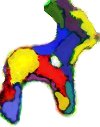
Transoxiana 12
Agosto 2007
Index
ISSN 1666-7050

|
Transoxiana 12 |
It was after the formation of the Kushan Empire that Buddhism started to be widely spread beyond the Hindu Kush and the Pamir. There were two paths for the Buddhist missions in Asia: the first was from Southern India into Ceylon and Indochina; the second through North-West India, Bactria-Tokhāristān, Sogdiana, Ferghana, the Tarim Basin and onto China and beyond1 (fig. 1). The latter path was certainly favored by the presence of a stable kingdom which controlled trade along the so-called "Silk Road" and whose sovereigns supported non-brahmanical religions.
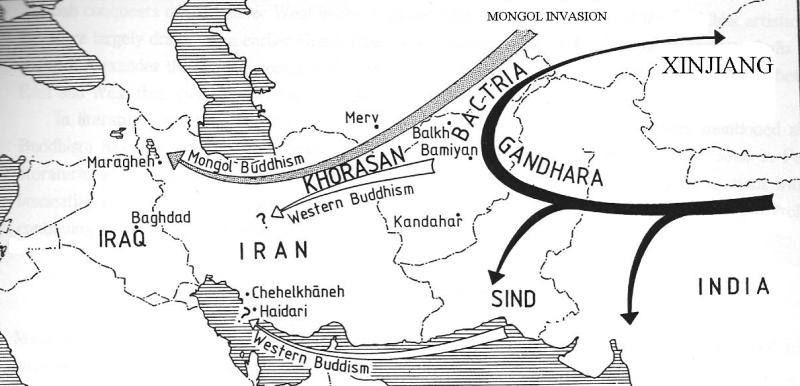
Fig. 1. The direction of Buddhist missions in Asia
According to the findings of pre-Islamic Persian art, especially those dated to the Arsacid and Sasanian periods, Buddhism had never many followers in proper Persia. Also, the direct sources do not shed much light on the question apart for short hints referred to the early Sasanian period (3rd century). External sources can be considered more helpful and, in fact, Chinese chronicles speak of An Shigao (probably dead around the end of the 2nd century-beginning of the 3rd century) who was among the first Buddhist missionaries to arrive into China.
An Shigao was a foreigner of noble origins considered to be connected with the royal house of his country: Anxi2. This is a Chinese transcription for the name Aršak3 (Arsaces in Latin sources) or, more widely, for the Parthian Empire which was ruled by the Arsacid Dynasty between c. 240 BCE-224 CE. This identification points out that also in Persia there must have been at least an idea of Buddhist religion although, in recent times, it was proposed to identify Anxi not as the Parthian Empire extended from Parthia-Margiana to Mesopotamia but as the Indo-Parthian Kingdom4. The Indo-Parthians, more modestly, ruled in Drangiana, Arachosia, and Punjab between c. 20-60 and they could control also Gandhāra (and, probably, Jammu) at the time of the founder of the kingdom, Gondophares (c. 20-46)5. Such chronology does not fit well with the date of activity of An Shigao in China (second half of the 2nd century) but the problem could find a (partial) solution if one accepts the identification of the Anxi of Chinese sources with Margiana as proposed by D. Utz.
The region which had Merv as its capital was annexed to the Parthian Empire most likely by Phraates II (138-127 BCE)6 but the first traces of Buddhism there are attested archaeologically only starting from the 4th century CE7. As proved by N. Sims-Williams8, several Indian borrowings (even terms specifically Buddhist) are attested in Parthian language already before the 3rd century. For this reason and because of other religious aspects of the question, D. Utz found enough evidence to show that Buddhism was known by the Arsacids although it was never a relevant religion of the Parthian Empire. So, the information of Arsacid Buddhist missionaries in China should be considered an episode and not an evidence of the adhesion of great part of the population under Arsacid rule to the Dharma9. The hypothesis is certainly valid but only new archaeological discoveries in the historical region of Margiana (today in southern Turkmenistan) could prove in a definitive way that the area around Merv was An Shigao’s motherland.
In any case, also the former Indo-Parthian kingdom which was annexed by the Kushanas around 60 CE could have been the starting point of An Shigao mission. In fact the Kushan invaders of North-Western India were protectors of Buddhism (and, at certain extent, of Jainism as well) and it is not improbable that they extended their protection also to those Arsacids converted to the creed of the Enlightened One and still living in Gandhāra in the 2nd century.
Some scholars argued that another Indian dynasty, the early Pallavas (founded around the middle of the 3rd century in the modern regions of Andhra Pradesh and Tamil Nadu), could have been of Parthian origin10. At the moment the research cannot confirm such an hypothesis but, in any case, the Pallavas supported Brahmanism and not Buddhism11.
The relationships between the Parthians and the Kushanas were never good. It was rightly observed as it is not possible to be specific on the origins of the Indian diplomatic missions received by Augustus in 25 and 21-20 BCE12 but it could be considered correct that India at the dawn of the Kushan invasion was trying to avoid the Parthian Empire in order to trade directly with Rome. Later, when the Kushanas became the rulers of northern India, between the 1st-3rd century, also the Roman coins (especially the golden aurei) were taken as a model by them13 (fig. 2). Clearly, this was a reflection of good trade relations but it cannot be ruled out that Rome and the Kushanas looked for a military alliance as well. In this view, also the religious tolerance of the Arsacids could have been precluded to the Buddhists living in the eastern part of the Parthian Empire possibly considered agents of the Kushanas. In the Parthian Empire lived Mazdeans, Christians, Jews, and pagans but it is not clear if the ruling class officially accepted the religion spread into Iranian lands by Zoroaster as it happened during the early Sasanians, in the second half of the 3rd century. Due to the lack of direct sources, only archaeology and art can partially help in pointing out that also among the Parthians the Mazdeans had a kind of prominence, although the religious iconography was highly dependant on Greek models.
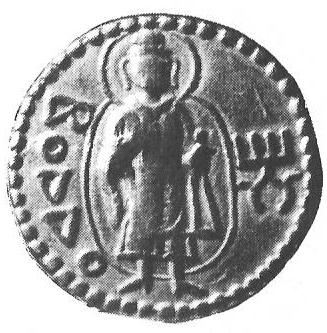
Reverse of Kanishka coin with image of the Buddha.
Utz rightly observed as the only specimens of Parthian literature are due to the Manicheans who used such a language for the transmission of their holy books in Central Asia and China. This could be a further evidence of the religious habits of the Parthians as probable adherents of Mazdeism, a religion, as it was already suggested by A. Bausani, quite adverse to scripts in general14.
In some other cases, Manichean texts kept very interesting information on the spread of Buddhism in the ancient world. The so-called "Manichean Kephalaion of Dublin" undoubtedly mentions the presence of this religion among the Kushanas and the Parthians15. Such an evidence has been considered genuine since it resulted from the followers of a religion who would have had only advantages in neglecting the adhesion of these Iranian peoples to Buddhism. Then, it could be considered that the Manicheans had an adequate knowledge of India, since Mani himself is said to have traveled there, most likely somewhere in western India16.
Among the other famous Buddhist missionaries of Parthian origin, active in China in the second half of the 2nd century CE, there is also An Xuan. Possibly, his motherland too was located somewhere eastward of the main centers of the Arsacid Empire exactly as it has been considered above for An Shigao’s provenance. The Chinese sources do not report a detailed biography like for An Shigao but it is clearly stated that he belonged to the mercantile class17. The archaeological findings in China which are particularly numerous to support the correctness of the literary sources about the good Sino-Iranian relations in the Sasanian period are almost completely absent for the Parthian period. Just a Chinese bronze object dated c. 3rd century presents on one side an inscription considered to be the corruption of a Greek legend reproduced normally on Parthian coins18 (fig. 3). The object could be (cautiously) used as an evidence about the trade intercourses between Han China and the Parthian Empire. The trade routes on land and sea had definitely an important role in the diffusion of Buddhism and, in fact, it was Clemens of Alexandria (who was contemporaneous of An Shigao and An Xuan) who first wrote in the Roman Empire about a holy man in India called "Βούτα"19. This first mentioning was probably due to the intensification of the direct trade relations between Egypt and India and it could be cautiously intended as a probable knowledge (although scarce) of Buddhism in Persia at the time of the Arsacid dominion.
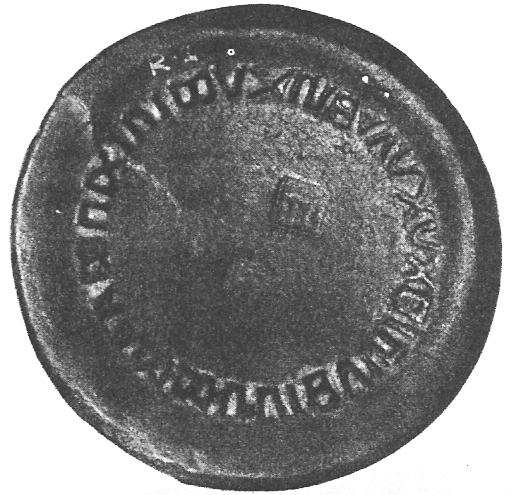
Fig. 3. Corrupted Greek inscription on a Chinese bronze object (possibly from a Parthian coin).
According to the edicts written on rocks by the Mauryan Emperor Aśoka (c. 323-185 BCE), Indian embassies where sent to the main Hellenistic courts of the period and, so, to Egypt too20. Unfortunately, no evidence of such an early contact with India has survived in western sources and, in any case, it is not completely sure that the Indian missions were led by followers of Buddha. The Kushanas had, for sure, relations with Egypt, as it is supported by the items of Egyptian production (most likely, specifically, Alexandrian) found in India and (much more evident) in Central Asia21. The main sites still remain Arikamedu in Tamil Nadu (where the findings are constituted mainly by Roman coins and glass) and Begram-Kapiśa in nowadays Afghanistan (small size statuettes and glass). On the way back, from India to Roman Empire, the ivory statuette found at Pompei (as it is well known, destroyed in 79 CE by a volcanic eruption) still represents a good argument in support of the existence of a direct trade route between India and the Mediterranean region22.
Some sources record the presence of pagan Indians on the Armenian soil around the middle of the 2nd century CE. They lived, undisturbed, in the Armenian region of Daron until the beginning of 4th century, when they were attacked and forced to become Christians23. According to E. Seldeslachts, at least their two leaders could have easily been representatives of those Greeks formerly settled in Bactria, who later occupied the Ganges Plain until c. 50 CE and started to be known by modern historians as Indo-Greeks24. Unfortunately, the sources are not too specific on the religion professed by this people in Daron. It is not clear if they adhered to Buddhism since they are described more generally as pagans in the Armenian sources which are considered to be, normally, quite precise25.
External documents still represent an invaluable tool for the reconstruction of the history of pre-Islamic Persia. During the Islamic period authors like Mas‘ūdī (10th century) and al-Bīrūnī (10th-11th century) wrote that an enigmatic Indian religion was very spread also in Iran and beyond it, even in Iraq and until the border with Syria. Some scholars recognized several unmistakable Buddhist elements in the description given by the Muslim authors mentioned above but also incongruences26. In some cases, also direct written sources constitute a good reference, as the inscriptions of the Great Priest Kerdir written during the reign of Bahrām II (276–293). In that period the Sasanians were officially Mazdean and, in fact, in his inscriptions Kardir mentions the persecutions against the followers of other religions who lived within the Persian Empire. Among them, it is clearly stated that also Hindus and Buddhists suffered persecutions27.
Most likely, the inscription refers to the subjects of the Sasanians living in the easternmost satrapies of the Persian Empire, that is to say – specifically in the case of Buddhism – the former land of the Kushanas (Bactria and Gandhāra) and especially Margiana. However, as already observed above, it was argued that Buddhism has been really strong in Margiana only since 4th century CE and not since 2nd century CE as formerly thought28. At Merv, the main center of historical Margiana (nowadays in southern Turkmenistan), the archaeological investigation of the Soviet period revealed interesting traces of fervent Buddhist activity29 (fig. 4). Probably, the community which adhered to the Dharma here suffered temporary persecutions. In his memories about the travels in Central Asia on the way to India, the Chinese pilgrim Xuan Zang (7th century) wrote about the Sasanians as followers of Buddhism because he referred exclusively to the eastern part of Persia which was represented in that time by Margiana30.
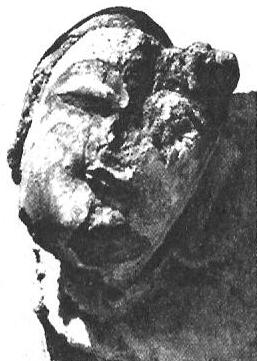
Fig. 4. Buddha head in clay from Gjaur Kala (Merv).
According to T. Kawami, also the complex of Kuh–e Xāje in Sistān revealed traces of the presence of Buddhists in the period between the fall of the Parthians and the early Sasanians31. Once more, the site belongs to the easternmost fringes of the Persian Empire and quite far from the main centers of Persian culture (such as Fārs and Mesopotamia).
A 4th century fragmentary statuette of Śiva was found during the Italian excavations at Ctesiphon in the '60s of the last century32 (fig. 5). Unless its Indian character and the same material (gray schist) allows undoubtedly an attribution to the Gandhāra school of art, it is not possible to be sure about its collocation within the sphere of Buddhist art since also Hindu divinities were represented in the regions of north-western India and Śiva was quite common33.
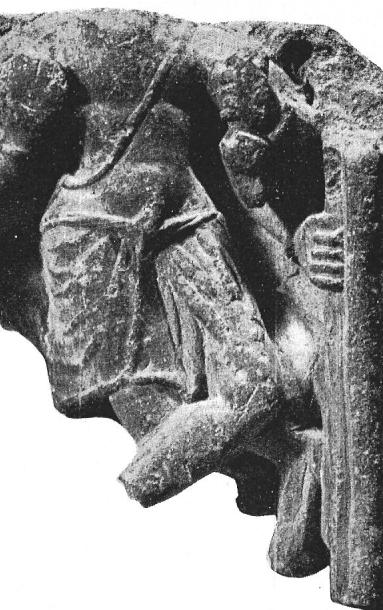
Fig. 5. Carved image of Siva from Ctesiphon.
In the past, the supposed presence of Buddhist in proper Persia was advanced by R. Bulliet on the bases of toponyms comprising the name Naubahār ("new vihāra")34. The term present a series of problems connected to its use as, for example, the same ethimology of the Indian region of Bihar which would have come from vihāra because of the (not archaeologically proved) presence of numerous (Buddhist) buildings in ancient times there. A Buddhist temple named Naubahār existed at Balkh (the capital of ancient Bactria) and it is recorded in Chinese and Islamic sources35. The Muslim authors, however, did not agree about the divinity worshipped there: for example, for Yāqūt and ibn-Khallikān (13th century) it would have been a "Zoroastrian temple", while for Mas‘ūdī (10th century) it was dedicated to a generic lunar divinity. Recently, it has been proposed to recognize different phases in the life of such a building according to the rulers of the ancient region of Bactria: originally it was dedicated to a lunar divinity but it was transformed in a Buddhist temple under the Kushanas between 1st century BCE-1st century CE. Between 4th-5th century it was converted in a Mazdean temple by the Sasanians but during the Turkish hegemony in 6th-7th centuries it became again Buddhist36. Naubahār was considered to have been even at the origin of the name of Bukhara although now it is preferred to recognize in its ethimology an adaptation of the Sogdian word *βuχārak (ancient Turkish buqaraq, Arabic fākhera) which means "lucky place"37. Then, some mistakes on the identification of buildings with this name have been made in the past because of a series of prejudices especially regarding the interpretation of Islamic sources38. The origin of the toponym seems to be destined to continue to represent an enigma especially when it is found in central Iran, in any case it is worth remarking that -as in Bactrian language- the religious terminology was accurate in terms of holy buildings: βαυαρο was the exact translation of (Buddhist) vihāra, while βαγολαγγο was used to mean a generic temple39.
According to some studies and site reports by W. Ball, some evidences of Buddhist activity can be traced also in the main core of Sasanian Empire. In Fārs Province several cave complexes have been discovered and studied since the ‘70s of the last century and, for some of them, an attribution to the late Sasanian period-beginning of the Umayyad has been proposed40 (fig. 6). Unfortunately, the interruption of the archaeological investigation in modern Iran – which only very recently has started again with extremely interesting results – did not allow to ultimate the study of these sites in order to know if the caves are actually Buddhist (and not, for example Nestorian) and neither to establish a certain chronology. Other Buddhist caves have been discovered in Iranian Adharbayğan (such as Rasatkhāneh and Varğuvi) and in the Zanjān Province (such as Qonqor-olong) but they are all dated to the Islamic period41.
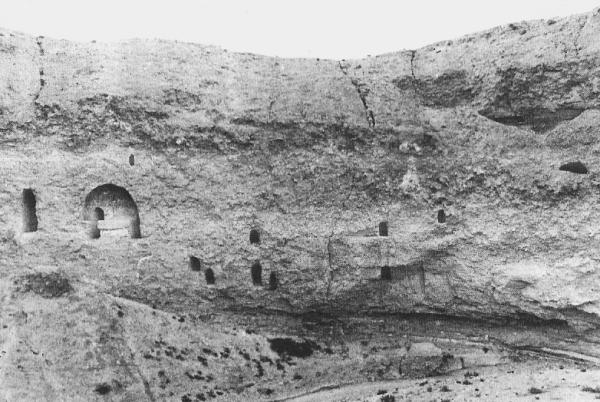
Fig. 6. View of the Haidari caves (Fars Province, Iran).
These caves still present decorative elements which can only be the result of the influence from eastern Buddhism, as the carved dragon at Qonqor-olong (fig. 7). In fact, during the Mongol occupation, the Iranian aždaxā started to assume the connotation of the Chinese dragon (long) exactly as the Simurgh became in effect a phoenix (fenghuang).
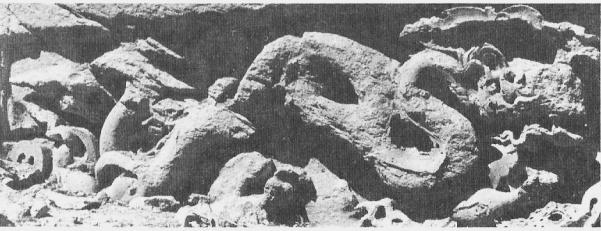
Fig. 7. Carved dragon of the Ilkhanid period (13th century).
In conclusion, the only certain traces of some Buddhist activity in proper Iran still remain the caves dated to the Ilkhanid period. They constitute an argument not deeply investigated and only partially studied whose discussion, however, is not among the aims of the present paper.
Fig. 1. The direction of Buddhist missions in Asia. Adaptation after: Ball, 1989: fig. 1.
Fig. 2. Reverse of Kanishka coin with image of the Buddha. After: J. Cribb, "Kanishka’s Buddha Coins – The Official Iconography of Śākyamuni & Maitreya", The Journal of International Association of Buddhist Studies, 3, 2, 1980: fig. at page 85.
Fig. 3. Corrupted Greek inscription on a Chinese bronze object (possibly from a Parthian coin). After: Maenchen-Helfen, 1952.
Fig. 4. Buddha head in clay from Gjaur Kala (Merv). After: Mkrtyčev, 2002 : fig. 2 at page 148.
Fig. 5. Carved image of Śiva from Ctesiphon. After: Taddei, 1971.
Fig. 6. View of the Haidari caves (Fārs Province, Iran). After: Ball, 1986: pl. Ib.
Fig. 7. Carved dragon of the Ilkhanid period (13th century). After: G. Curatola, Draghi, 1989: fig. 40.
P. C. Bagchi, India and China. A Thousand Years of Sino–Indian Cultural Contact, Calcutta, 1944.
W. Ball, "Two Aspect of Iranian Buddhism", Bulletin of the Asia Institute, 1-4, 1976: 103-163.
W. Ball, "Some Rock-Cut Monuments in Southern Iran", Iran, XXIV, 1986: 95-115.
W. Ball, "How Far Did Buddhism Spread West? –Buddhism in the Middle East in Ancient and Medieval Times –, al-Rāfidān, X, 1989: 1-11.
W. Barthold, Turkestan down to the Mongol Invasion, London, 1977.
W. Barthold, D. Sourdel, "al–Barāmika", in: The Encyclopedia of Islam, N. S.,
vol. I, ed. H. A. R. Gibb, J. H. Kramers, E. Lévi–Provençal, J. Schacht, B.
Lewis, Ch. Pellat, Leiden, London, 1960: 1033.
A. Bausani, "La letteratura neopersiana", in: A. Pagliaro, A. Bausani, Storia della letteratura persiana, Milano, 1968: 131–563.
R. W. Bulliet, "Naw Bahār and the Survival of Iranian Buddhism", Iran, vol. XIV, 1976: 140–145.
P. Callieri, "Hephthalites in Margiana? New Evidence from the Buddhist Relics
in Merv", in: La Persia e l’Asia Centrale da Alessandro al X secolo, Roma, 1996:
391–400.
G. P. Carratelli, Gli editti di Aśoka, Milano, 2003.
E. C. L. D. Caspers, "The Indian Ivory Figurine from Pompei - A Reconsideration of Its Functional Use", in: South Asian Archaeology, ed. H. Härtel, Berlin, 1981: 341-353.
M. Compareti, "Traces of Buddhist Art in Sogdiana" in: Buddhist Asia, 2, ed. M. Maggi, Kyoto, forthcoming.
P. Daffinà, "Sulla più antica diffusione del Buddismo nella Serindia e nell’Iran
orientale", in: Monumentum H. S. Nyberg, I, Acta Iranica, 4, 1975: 179–192.
P. Daffinà, "La Persia sasanide secondo le fonti cinesi", Rivista degli Studi
Orientali, LVII, 1983: 121–170.
P. Daffinà, Le relazioni tra Roma e l’India alla luce delle più recenti indagini,
Roma, 1995.
É. De La Vaissière, Histoire des merchands sogdiens, Paris, 2002.
R. E. Emmerick, "Buddhism Among Iranian Peoples", in: The Cambridge History of Iran. Volume 3 (2). The Seleucid, Parthian and Sasanian Periods, ed. E. Yarshater, Cambridge, 1986: 949–964.
R. E. Emmerick, "Buddhism", in: Encyclopaedia Iranica, vol. IV, ed. E. Yarshater, London, New York, 1990: 492–496.
M. I. Filanovič, Z. I. Usmanova, “Les frontières occidentales de la diffusion du bouddhisme en Asie centrale”, Cahiers d’Asie centrale, 1-2, 1996: 185-201.
A. Forte, The Hostage An Shigao and His Offspring. An Iranian Family in China, Kyoto, 1995.
Ch. Frohlich, "Indo-Parthian Dynasty", in: Encyclopaedia Iranica, ed. E. Yarshater, vol. X, New York, 2004: 100-103.
R. N. Frye, La Persia Preislamica, Milano, 1967.
R. N. Frye, "Bukhara ii. In Pre–Islamic Times", in: Encyclopaedia Iranica, vol. IV, ed. E. Yarshater, London, New York, 1990: 511–513.
Ph. Gignoux, Les quatre inscriptions du mage Kirdīr. Textes et concordances, Paris, 1991.
Ph. Gignoux, "Religions and Religious Movements–I. Part One. Zoroastrianism", in: History of Civilizations of Central Asia. Volume III. The Crossroads of Civilizations: A.D. 250 to 700, ed. B. A. Litvinsky, Paris, 1996: 403–412.
D. Gimaret, "Bouddha et les bouddhistes dans la tradition musulmane", Jouranl Asiatique, CCLVI, 1969: 273-316.
G. Gnoli, "Remarks on the Manichaean Kaphalaion of Dublin", Bulletin of the
Asia Institute. Aspects of Iranian Culture. Studies in Honour of R. N. Frye,
4, 1990: 153-182.
R. Göbl, "Roman Patterns for KushāÞa Coins", Journal of the Numismatic Society
of India. Professor A. S. Altekar Commemoration Volume, XXII, 1960: 75-96.
R. Göbl, Dokumente zur Geschichte der iranischer Hunnen in Baktrien und Indien, 4 volls., Wiesbaden, 1967.
K. Hori, "Persian Buddhsit Translators in China", in: The Dastur Hoshang Memorial Volume being Papers on Iranian Subjects in Honour of Late Shams–ul–Ulma Sardar, Bombay, 1918: 509–513.
A. Invernizzi, "A Relief in the Style of the Gandhara School from Choche", Mesopotamia, 3-4, 1968-1969: 145-158.
Š. S. Kamaliddinov, Istoričeskaja geografija Yužnogo Sogda i Toharistana po arabojazyčnym istočnikam IX–načala XIII vv., Taškent, 1996.
T. Kawami, "Kuh–e Khwaja, Iran, and Its Wall Paintings: The Records of Ernst
Herzfeld", Metropolitan Museum Journal, vol. 22, 1987: 13–52.
J. Kennedy, "The Indians in Armenia, 130 B.C.-300 A.D.", Journal of the Royal
Asiatic Society, 1904: 309-314.
Lin Ying, Solidus: From Constantinople to Chang’an, Beijing, 2004.
D. W. Macdowall, "The Dynasty of the Later Indo-Parthians", The Numismatic Chronicle, V, 1965: 137-148.
O. Maenchen-Helfen, "A Parthian Coin-Legend on a Chinese Bronze", Asia Major, III, I, 1952: 1-6.
J. W. McCrindle, Ancient India as Described by Megasthenês and Arrian,1926 (reprint New Delhi 2000).
A. S. Melikian–Chirvani, "L’Évocation littéraire du bouddhisme dans l’Iran musulman", in: Le Monde iranien et l’Islam, Paris, 1974: 1–72.
T. K. Mkrtyčev, Buddijskoe iskusstvo Srednej Azii (I-X vv.), Moskva, 2002.
K. A. Nilakanta, "South India", in: The Vākātaka-Gupta Age, R. C. Majumdar, A. S. Altekar eds., Delhi, Varanasi, Patna, Madras, 1986: 219-250.
G. A. Pugačenkova, Z. I. Usmanova, "Buddijskij kompleks v Gjaur-Kale starogo
Merva", Vestnik Drevnej Istorii, 1, 1994: 142-171.
E. G. Pulleyblank, "An Shih–Kao", in: Encyclopaedia Iranica, vol. I, ed. E.
Yarshater, London, Boston and Henley, 1985: 1000–1001.
G. Scarcia, "The Vihār of Qonqor-olong. A Preliminary Report", East and West,
25, 1-2, 1975: 99-104.
J. E. Schwartzberg, A Historical Atlas of South Asia, Chicago, London, 1978.
E. Seldeslachts, "The End of the Road for the Indo-Greeks?", Iranica Antiqua,
XXXIX, 2004: 253-255.
J. Sherrier, "Śiva in Gandhāra", South Asian Archaeology, eds. A. J. Gail,
J. R. Mevissen, Stuttgart, 1993: 617-624.
N. Sims–Williams, "Indian Elements in Parthian and Sogdian", in: Sprachen des
Buddhismus in Zentralasien, ed. K. Röhborn, W. Veenker, Wiesbaden, 1983: 132–141.
N. Sims–Williams, "Nouveaux documents sur l’histoire et la langue de la Bactriane", Comptes Rendus de l’Académie des Inscriptions et Belles Lettres, 1996.a: 633–654.
T. A. Šerkova, Egipet i kušanskoe carstvo, Moskva, 1991.
W. Sundermann, "Mani, India and the Manichaean Religion", South Asian Studies, 2, 1986: 11-19.
M. Taddei, "On the Śiva Image from Kūhah, Mesopotamia", Annali dell’Istituto Universitario Orientale di Napoli, 31, 4, 1971: 548-552.
M. Taddei, "Non-Buddhist Deities in Gandharan Art – Some New Evidence", in:
Investigating Indian Art, Berlin, 1987: 349-362.
N. Tajadod, "Les premiers traducteurs de sūtras bpuddhisques en Chine, les Parthes
An Shigao et An Xuan", Iran Questions et Conaissances. Vol. I: la période ancienne,
Paris, 2002: 363-380.
M. Tardieu, "La diffusion du bouddhisme dans l’empire kouchan, l’Iran et la Chine, d’après un kephalaion manichéen inédit", Studia Iranica, 17, 2, 1988: 153-182.
X. Tremblay, Pour une histoire de la Sérinde, Wien, 2001.
D. A. Utz, "Aršak, Parthian Buddhists, and «Iranian» Buddhism", in: Buddhism
across Boundaries – Chinese Buddhism and the Western Regions. Collection of
Essays 1993, Taipei, 1999: 421-447.
Wang Bangwei, "An Shigao and His Countrymen: Parthian Buddhists’ Contribution to the Eraly Chinese Buddhism", in: Collection of Papers on Iranian Studies in China, ed. Ye Yiliang, Beijing, 1993: 83–93.
E. Zürcher, The Buddhist Conquest of China. The Spread and Adoption of Buddhism in Early Medieval China, Leiden, 1959.
E. Zürcher, "Han Buddhism and the Western Region", in: W. L. Idema, E. Zürcher eds., Thought and Law in Qin and Han China: Studies Dedicated to Anthony Hulsewé on the Occasion of His Eightieth Birthday, Leiden, 1990: 158–182.
 © The Author(s) -- Los artículos son propiedad de sus autores. (Ley 11.723)
© The Author(s) -- Los artículos son propiedad de sus autores. (Ley 11.723)